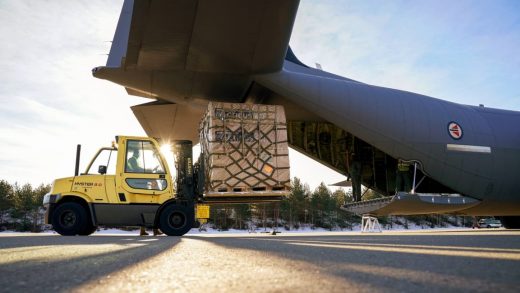As Russia bombards Ukraine, it could become a battle between two supply chains
There’s a word in the Russian language, a word worth learning as we watch the country invade Ukraine. Rasputitsa.
Rasputitsa refers to two particular times of the year—in fall when the rains hit, and in spring as the snow melts. These are the moments when the region’s clay-laden soil becomes saturated with precipitation, and unpaved roads transform into mud so relentlessly deep and sticky that a truck’s front axle can be swallowed whole, and even treaded tanks have difficulty traversing the ground.
The natural phenomenon has offered Russia one of its greatest defense tactics through history. Rasputitsa thwarted Napoleon’s invasion of Russia in 1812. Rasputitsa prevented Germany from occupying Moscow in 1942. But, as Ukraine’s daytime temperatures creep above freezing, it’s Russia, ironically—and its vast armament of tanks and troop transporters—that’s about to be on the receiving end of rasputitsa.
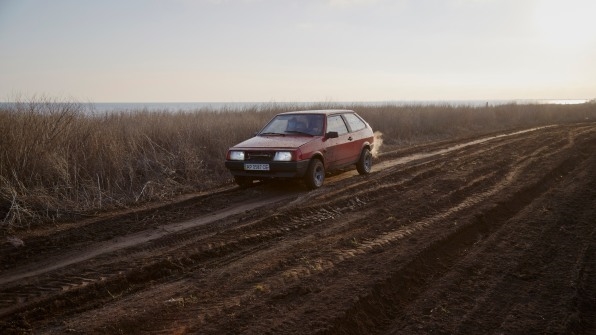
[Photo: Pierre Crom/Getty Image]
The consequences may be dire for Putin as he attempts to make claim of a muddy country with a landmass that’s roughly the size of Texas—particularly because experts I’ve spoken to believe he underestimated the importance of one of the most important aspects of any modern war: the supply chain.
Ukraine and Russia are both vulnerable to their own supply chain issues, which will impact how the battle plays out over the coming days, weeks, and months. “I do think one of the ways to think about this is very much like COVID-related supply chain issues,” says David Stone, professor of Russian studies at the Naval War College. “The other analogy would be a big natural disaster, a hurricane or snowstorm that shuts everything down. But being in the middle of a war takes all that and makes things worse.”
Ukraine needs bullets and missiles, and it may soon need food and other resources Russia could block from reaching cities. Russia requires these same things. But, even more so, it needs almost unfathomable amounts of gasoline to keep its 40-mile–long invasion moving—lest it get stuck in the mud.
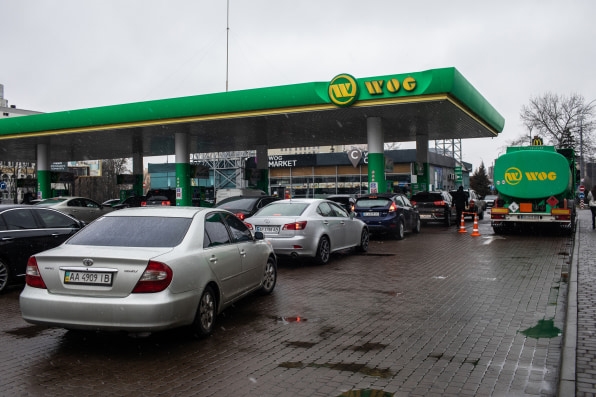
[Photo: Erin Trieb/Bloomberg/Getty Images]
Ukraine needs food, infrastructure, and bullets
At the moment, Ukraine can still get supplies into the country through its western border of NATO allies. Its supply chain flows from this route, but whether or not these supplies can actually reach their key strategic cities is a larger challenge that Russia is already exploiting.
So far, Russia has attacked from everywhere else: north, east, and south. As Russian troops advanced, Ukraine responded with a textbook maneuver of self-sabotage. It destroyed its own bridges in those regions.
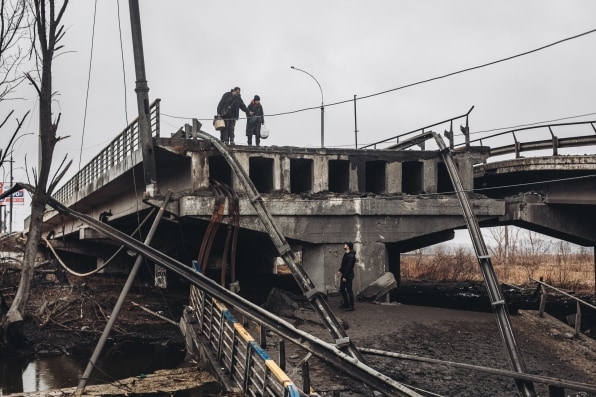
[Photo: Diego Herrera/Europa Press/Getty Images]
“The purpose of that is to stop the Russians from advancing across that bridge,” says Stone. “If they do, then it’s [still] a bottleneck to resupply Russian troops.” (Typically, tools like armored-vehicle-launched bridges—what are essentially tank bottoms with retractable bridges on top—help mitigate some broken bridge crossings.)
But as far as anyone can tell, the bridges to Ukraine’s west—leading to NATO countries like Poland—have not been targeted by Russian jets. This leaves a relatively clear line for transporting weapons from the U.S. and Canada to reinforce Ukrainian troops, along with food to feed its citizens. For now.
Already, Russia surrounded the port city of Kherson before seizing it, cutting off Ukraine’s access to the Black Sea, and the city of Mariupol is currently encircled. As Russia descends on the capital city of Kyiv, experts I spoke to agreed that it’s likely we’ll see the city encompassed by Russian troops, choking off any supplies from coming in or out. While Russia could then invade in a destructive, block-by-block battle, it’s also possible that it may sit tight to starve the city out. Again, it’s an old technique, used by the Germans against Russia in 1941 during the siege of Leningrad, notes William Reinsch, who holds the Scholl Chair in International Business at the Center for Strategic and International Studies (CSIS).
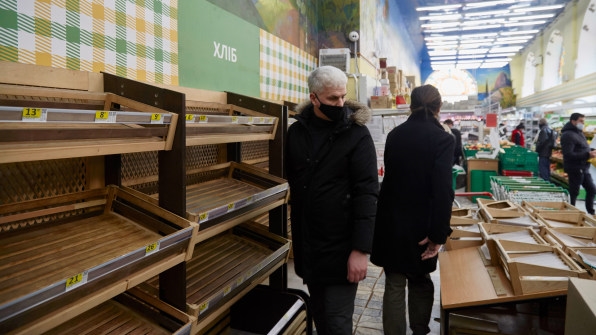
[Photo: Pierre Crom/Getty Images]
“They have to be completely surrounded,” explains Reinsch, comparing it to the so-called 900-day siege that caused widespread famine and a million deaths in Leningrad. “If there’s one exit and entry ramp, this doesn’t work.”
Over the last week, we’ve seen Ukrainians form long lines for groceries and pharmaceuticals—and that’s with supply chains running relatively smoothly. Now, Kyiv’s grocers are running out of food, though such reports may not tell the whole story.
“I think the first thing is that we don’t exactly know what the stores of essentials are in places like Kyiv, or any Ukrainian cities being attacked,” says Bradley Martin, the director of Rand’s National Security Supply Chain Institute. “They have whatever was on hand when the wars started . . . though it may very well be that knowing the siege was coming, Ukrainians have done a good job stockpiling.”
Ukraine is actually the world’s fourth largest exporter of grain, but this is not harvest season. And no expert knows how much food individual Ukrainians actually have stockpiled inside their own homes.
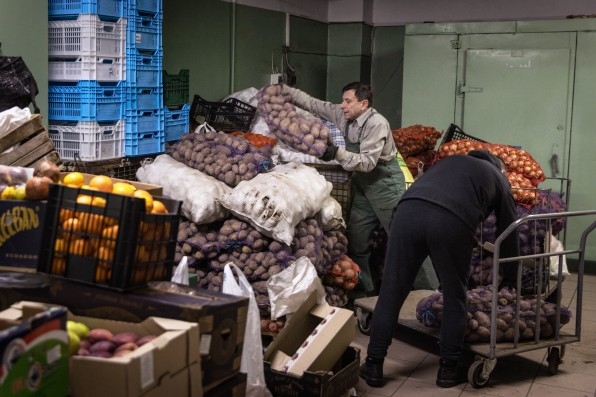
[Photo: Chris McGrath/Getty Images]
“I think probably for anything prolonged, the issue of food becomes larger than anything else. Large cities have hospitals, infirmaries, pharmacies . . . they probably have stocks of medical equipment and things people need,” says Reinsch. “What they might not have is enormous supplies of food because they’re used to getting stuff from the farm. Plus, it’s perishable. If you’re talking about drugs, [medical] supplies, those can last for months. If you’re talking grain and vegetables, you have to have a constant flow. So that’s a much greater challenge.”
Russia might also shut off major cities from water and electricity, which would be devastating. Mariupol is currently without electricity, and notably, Russian troops recently seized the largest nuclear reactor in Ukraine. “Any part of the infrastructure is going to be gone, controlled by the Russians,” says Martin.
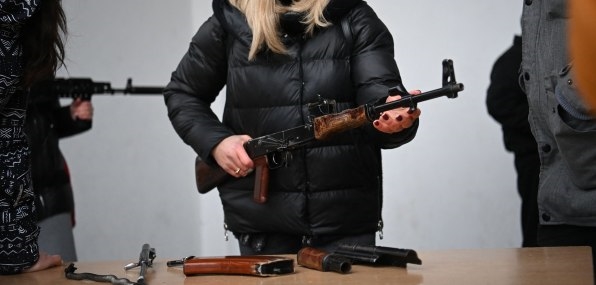
[Photo: Daniel Leal/AFP/Getty Images]
Ukrainian citizens have stockpiled weapons for years, fearing Russian conflict. But they also need bullets and other armaments like anti-tank missiles, to defend themselves from invasion. Both the U.S. and Canada have committed weapons to Ukrainian defense, which will likely be coming in from the NATO line in the west, via Poland.
“What’s going to happen, even if [Putin] takes over . . . is guerrilla warfare and insurgency,” says Reinsch. “In cities, that’s not hard. They hide in basements . . . and at night they shoot Russian soldiers on patrol.”
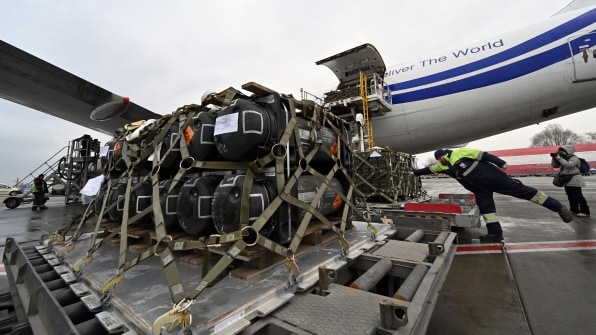
[Photo: Sergei Supinsky/AFP/Getty Images]
Assuming that Ukraine has the international support to source enough weapons, its advantage in bringing in munitions is that they are small. That makes it easy for Ukraine to move critical weapons, key to its resistance, in a compact package that’s hard to intercept.
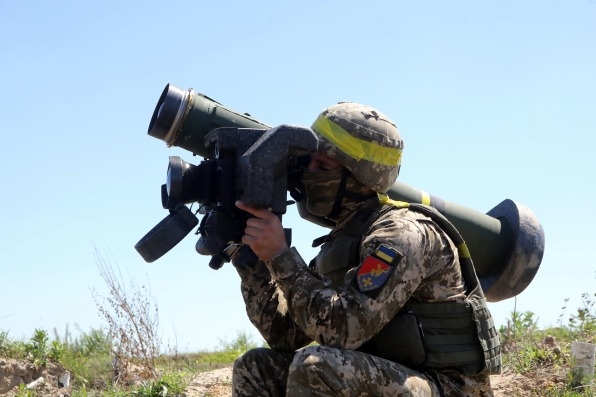
[Photo: Volodymyr Tarasov/ Ukrinform/Future Publishing/Getty Images]
Russian tanks are big and hard to miss. But hundreds of anti-tank missiles needed to stop them can fit on just a few trucks. These weapons of guerrilla warfare are both devastating and compact, meaning they are relatively easy to move through a supply line. Ukrainians might not be able to sneak these weapons into a city past a full Russian blockade, but they could help Ukraine battle Russia everywhere else across the country. Namely, these missiles could exploit glaring weaknesses in Russia’s own supply chain—especially with the help of the region’s legendary mud.
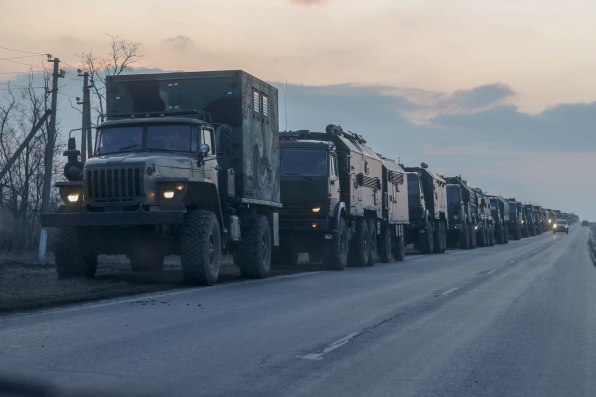
[Photo: Stringer/Anadolu Agency/Getty Images]
Russia didn’t bring enough gas
Like Ukraine, Russia also needs a steady supply of food and armaments. But Russia’s ground invasion requires an even more pressing need: gas.
While Ukraine is undoubtedly outgunned in this war, the Russian military already shows signs of being slowed by its own size. The 40-mile-long tank convoy outside Kyiv does not appear to have moved much in the past few days. Experts concur that the reason is probably a lack of fuel.
Stone points out that an American M1 tank, for instance, gets atrocious gas mileage—an average of about 0.3 miles per gallon. In other words, every mile that a single tank drives requires three gallons of gas. Personnel carriers transporting Russia’s troops need gas, too. This fuel is not compact and easy to transport like explosives. Gas is bulky, and requires tankers to move.
Wouldn’t Russia have known this from previous wars, and planned for it?
“It looks as though Russian planning was pretty shabby,” says Stone, “that there was not a lot of careful thought of the operational requirements of what would be necessary. “Ukraine is a big place. The Russians don’t seem to have thought very hard about what that meant, particularly the logical problem of keeping fuel and ammunition up to front-line units.”
Stone points out, as many have, that Russia appears to have entered Ukraine expecting little to no resistance, and so it underestimated its need to secure a clean chain for fuel. As a proof point of this theory, Stone notes that Russia dropped paratroopers—elite, highly trained personnel who travel light but require immediate backup by a full army—at an airport outside Kyiv right as the war broke out. But the support tanks were still hundreds of miles away.
“To drop paratroopers outside Kyiv like that is to assume Ukrainians wont fight,” says Stone.
An essential point about the entire supply “chain” metaphor is that a chain is only as strong as its weakest link. Every tank or transporter doesn’t need to run out of fuel to slow, or even block, an invasion. It just takes a few weak links to break down an entire, otherwise efficient, system.
“You’ve got this 40-mile convoy of tanks on just a regular highway. Well, if they’re all stalled, how do you get fuel to them?” muses Reinsch. “It’s complicated.”
The Russian convoy’s weak links in the chain are only made worse by rasputitsa. If a tank is blocking a road, vehicles need to drive around it by going off-road. And the rasputitsa is only made worse thanks to another piece of poor Russian military planning: vehicle maintenance.
This is a thread that will explain the implied poor Russian Army truck maintenance practices based on this photo of a Pantsir-S1 wheeled gun-missile system’s right rear pair of tires below & the operational implications during the Ukrainian mud season.????
— Trent Telenko (@TrentTelenko) March 2, 2022
Military tires are built to endure heavy loads and avoid flats, so they’re formulated with dense, strong materials that are different than the tires for your average car. But especially when stored under the wrong conditions—like if exposed to too much sunlight—these tires can break down. Without optimum tire pressure, they crumble.
Early analysis by retired U.S. Defense Contract Management Agency member Trent Telenko shows just this phenomenon happening to Russian vehicles in Ukraine. And as such, the parts of the Russian convoy that do have fuel are stuck on the street because they can’t handle the mud.
“One explanation I’ve heard for the 40-mile traffic jam outside Kyiv is an inability to go off-road because of [the combination of] mud and tires,” says Stone. “American-style multi-lane superhighways are very [rare] on the ground. Even a paved road, if it’s only two-lane, can present real traffic problems if a lot of big clumsy equipment has to go down it.”
Russia will figure out how to get fuel to this line eventually, Martin argues, but that inevitably involves fuel tankers, which need to snake their way up already congested conditions. Airdropping fuel may be feasible but in far more limited quantities. But these fuel tankers aren’t a perfect solution in a contested war zone because, unlike the tanks they support, they are soft skinned. They don’t have heavy armor.
“You don’t necessarily need an anti-tank missile to take it out,” says Stone. “If I were the Ukrainian military, I’d plan to attack those resupply lines.”
Destroying gas tankers is not the way to win the war, but these lightweight attacks on Russia’s supply line can do something indirectly important: slow down Russia long enough that this war becomes economically unfeasible to support. Because while NATO countries aren’t attacking Russia, they are placing economic sanctions on it—which are already wreaking havoc on Russia’s economy.
“I think Ukraine can hold out for a very long period of time,” says Martin. “It may lose lose several cities, but it can defend itself a long time because its supply chains [in NATO countries] are well-defended. Russia’s supply chains they’ll figure out, but . . . they may find themselves in [economic] trouble more quickly. I would call that supply chain vulnerability at the strategic level. Money buys supplies.”
Fast Company , Read Full Story
(21)

